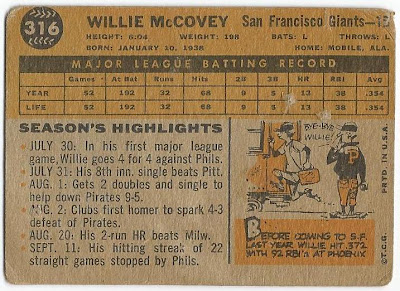I'll be there as well, working at Irv Lerner's table (number 317). Here's some info about Irv from the OBC Website that shows his long association with the hobby. If you're around, stop in and say hello.
However, this blog often likes to look back...and this year, I'll show my program from the very first National to be held in Chicago (but not the first...that was in Los Angeles in 1980). The year was 1983, and here is the cover:
It was also the 50th anniversary of the first major league All-Star game. Since Babe Ruth had famously hit a home run in that first game, he gets a spot of honor on the cover. Ernie Banks' connection to Chicago is obvious, and he was a featured autograph guest (signatures were free to attendees back then...those days are long gone). The HOF plaque card features Buck Leonard, who was another autograph guest. As for Johnny Mize, he wasn't shown as an autograph guest inside the program, but he was a willing signer at conventions at the time.
By the way...the 1983 All-Star game was held in Comiskey Park on July 6th, which may have helped determine the date of this National.
Here's the schedule of events. You can click the image to see it better:
Here's a picture in the program showing a younger Dr. Beckett. It was before he had his own monthly magazine and was just another seller at the show:
However, check this part out:
If there was something from the past I'd love to see -- and even help arrange it if I had the means -- would be a series of seminars on hobby topics, given by some of the best and brightest in the arena. I'd even offer to speak at one if asked. In Chicago '83, there were presentations on 19th Century cards by Lew Lipset and Keith Mitchell (who helped write a great book about the subject) as well as a Lipset slide show on prewar cards. That final forum on Dealers and the Hobby media would be a phenomenal idea.
Another neat thing on that page is the way certain former athletes are called "celebrity guests." Here's a page about them:
(Again...click on the image to see it in a more readable size)
And then there's this:
What an awesome idea. Today's hobbyists are largely from the era where we've been apt to take care of our cards. There are a lot of us who've never been given the chance to do something like flipping cards as a game. Even when there's countless cases of junk wax that can be gleefully ripped open to provide enough ammunition to get really good at it.
I also love that there are also levels for kids and teens. There really aren't enough things specifically geared for kids in our hobby (you can say that the cards themselves are targeted toward kids...but I might disagree with that). Anyway, here are the rules of the game:
So there's a small glimpse at our hobby 29 years ago, when the value of a '52 Topps Mantle was hovering around $800, when many 1950s commons could be found in dime and quarter boxes, and the National convention could fit inside a hotel ballroom.
If you're going to be at the show, leave a message saying when you'll be there. If you're a seller, do the same...maybe one of my readers will check you out.



























































